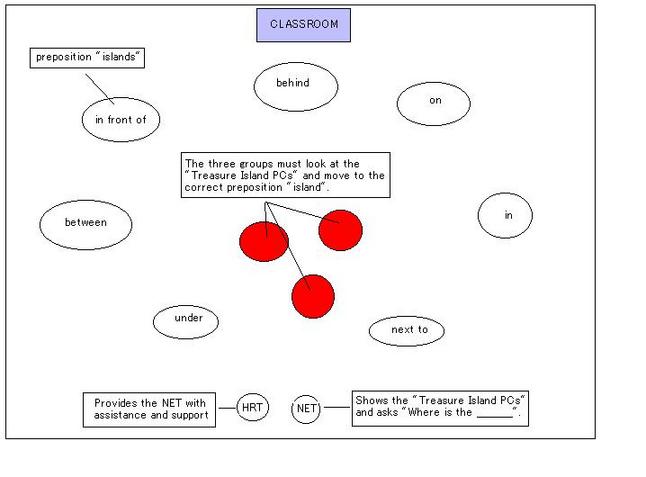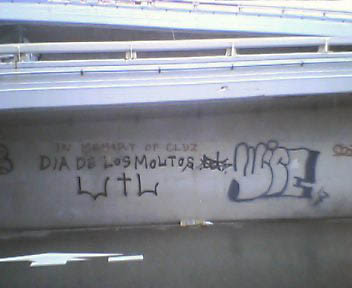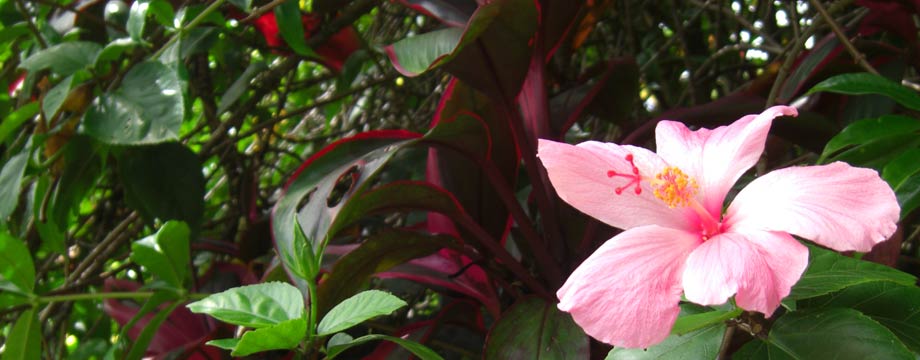I’m going to take a break from posting for a while, but I’m not gone. If you need to reach me, I’ll be here.
Mad Paint Skillz

I hate using generic MS applications to create or edit images, but sometimes it can’t be helped. Having to rely on MSPaint in order to make diagrams after being exposed to the capabilities of Illustrator is a “Flowers for Algenon” like experience. Then again, I’m not being asked to crank out stylized works of art, though that would be nice.
Big and Hairy
(A giant spider in Kyokushi, a place in Kumamoto known for smelling like manure all year round.)
For one interested in insects, reptiles, and other disgusting life forms, Japan is a great place to be. You can’t even escape from nature even if go to the center of the city. I thought that centipedes and giant spiders wouldn’t be able to make it outside of the country, but I was wrong.
The only bugs that I truly hate are cockroaches and mosquitoes. When I find a bug in my apartment, I usually try and put it back into the outside world, but cockroaches and mosquitoes face persecution.
Back when I lived in Aso, I had a huge furo (bath) that I never used, because it was too expensive to fill up. One day I saw a huge millipede crawl under a bucket in the tub, but then I forgot about it. The next week, when I was cleaning the tub, I found the body of the millipede under the bucket. I washed it down the drain.
The next month I started to find tiny millipedes crawling around the tub. What started as a few turned into hordes of millipedes all over the bathroom, some making it into the far reaches of my house. I think that I was being punished for letting the mother millipede die for no good reason, other than I didn’t feel like dealing with it. I helped some of the baby millipedes outside, but any that I found in the tub got washed down the drain…
Update:
Kevin’s comment on millipede reproduction led me to this site, where this excerpt was taken from:
Female millipedes make an underground nest into which they lay their eggs The nest is made by excreting soil they have eaten and using their anal folds to shape it as required. Either as a nest for a number of eggs or as a coating for individual eggs i.e. Glomeris balcanica. Female millipedes may lay as many a 2 000 eggs but a few hundred is more likely. There is great variation in the number laid within a species depending on the size and condition of the female. Some species such as Tachypodoiulus niger are iteroparous, i.e. they can lay more than one lot of eggs and may live for more than one year as mature adult. Other species such as Ophyiulus pilosus are semelparous, i.e. they lay one batch of eggs and then die.
Young millipedes hatch inside the nest and remain within it. They then rapidly, usually within 12 hours moult again into their first stadia (= instar). Polydesmus inconstans leaves the nest after this after this but other species remain in the nest for up to the first three stadia i.e. Pachybolus ligulatus. There are other variations on this theme for instance Orthomorpha (=Oxidus) gracilis remains inside the egg during its first stadium and does not hatch until after it has moulted to stadia 2. Stadia one millipedes have 3 pairs of legs on segments 2, 3 and 4 except in some Colobgnath species such as Polyzonium germanicum which has 4 pairs. However they gain legs rapidly with each moult the first young millipedes you see are normally already in possession of quite a few legs.
Temperate species tend to eat about 5X their weight in leaf litter between hatching and reaching maturity. They digest some of the plant material themselves, particularly any proteins and simple sugars. They also digest some of the micro-organisms that inhabit the surfaces of the material, particularly the fungi. Micro-organisms play a crucial role in the digestion of Millipedes by breaking down the cellulose that makes up the plant fibers into more smaller and easily digestible molecules like simple sugars. Many millipedes indulge in coprophagy, i.e. they eat their own faeces. Some species such as Apheloria montana will die if not allowed to feed on their own faeces, quite why is not fully understood.
Perhaps the millipede went down the drain, laid its eggs, and then crawled up to die. Or perhaps the eggs hatched inside her body and ate her feces. Ah, it feels so good to share information with others!
Muerto

I spotted this tag on the on-ramp in front of the main Juso Post Office. Although the tag is not especially ornate or eye catching, it’s kind of special. Most of the graffiti has no artistic or meaningful relevance.
The great majority of the tags around Osaka that I have seen are just scribbles done (usually done with a paint pens) more for the sake of vandalization than creative self-expression. I have seen some amazing street art around Japan, but it tends to be kind of rare and hard to capture. I seem only to get brief glimpses of such work while riding in a car or train with my camera stowed away.
Yes, “Cruz” and “muertos” are misspelled, but this does nothing to diminish the sentiment carried by the words. I wonder if Cruz hung out with the people who run the Mexican restaurant near my apartment, and if one of the customers put it up in his honor.
Nippon no Burger Takumi Avocado Wasabi
The Takumi Avocado Burger belongs to the Takumi genus in the Mos Burger Kingdom. Its contents, shown on this page as a diagram, consist of a Takumi bun, avocado slices, Takumi special sauce, a Takumi hamburger patty, Takumi avocado sauce, onions, tomatoes, lettuce, and a side of wasabi.
Unlike the meatloaf-like consistency of a real Mos Burger, the Takumi patties taste like a real beef patty from back home. The ingredients are fresh and result in a delicious burger, but at 880 yen the Avocado Takumi is overpriced and small by American standards. Despite the steep price and relatively small size, I’m glad that I ordered the Takumi.
It’s the little touches that make it worth ordering the Nippon no Burger Takumi Avocado Wasabi at least once. It comes with a card, signed by the cook who made it, and the name of the farmer who’s produce is used in the production of this burger, along with an explanation about the ingredients and the process of making a Takumi (not pictured).
With all of the reverence of serious religious ritual, the attendant sets up the customer for a special dining experience that is most unusual in a fast food restaurant. Mos Burger silverware exclusive to the Takumi are laid out, next to the burger, atop an indigo paper napkin that feels as if it were made of velvet instead of paper. A small cup holds a portion of freshly grated wasabi, giving the burger an earthier, more lively taste. It almost feels like sacrilege to actually eat the Takumi burger, but that makes it even more delicious.
So, will I order this burger again? No, even taking into consideration the wonderful experience of eating a Takumi it’s just too expensive, and I can make a better burger myself. What will the ingredients be when I finally get around to barbecuing again?
100 percent beef patty (optionally mixed with chorizo)
cheese, preferably cheddar or jack (not fake Japanese cheese)
bacon
avocado (optional)
lettuce (optional)
grilled onions
tomato (optional)
grilled pineapple slice (optional)
teriyaki and hot sauce or mayonnaise, ketchup, and mustard
egg (optional)
My burger will be served on a paper towel or plate, and will kick some major Takumi ass! The wasabi was interesting, but unnecessary. What the takumi needed was some teriyaki sauce instead. The Japanese can improve on many things- cars, electronics, toilets with special functions- but the burger will always be something that Americans do best…
Fine Beaches

Like a pair of Shisars to Okinawa, the guardian of Shirahama, Engetsu welcomes you upon arrival to the pristine beaches and bids farewell after a weekend of sand and surf. The snorkeling around this area is pretty good- better than Sumoto, but not quite as good as the Oita coastline in Kamae-machi.
If you ever are in Oita, I highly recommend visiting Kamae (here’s a link to info Southern Oita). Not only are there some pretty cool cultural heritage sites, but the snorkeling and diving in front of the Marine Culture Center are awesome. They keep pens of yellowtails here (there is a successful aquaculture operation right out front), and you can swim among the escapees. I just wish I had brought a spear along, because they were schooling all around me.
The best thing about the Marine Culture Center is that you can swim with ocean Sunfish in their 100 M. salt water swimming pool during the spring. I didn’t get to do this, but it sounds really cool. I don’t remember the prices (and didn’t pay because I went with my elementary school as a counselor on a school trip), but lodging is cheap. Also, you won’t find any foreigners around here, as word hasn’t gotten around yet (hopefully it stays that way).
Up here in Kansai, we don’t have the luxury of being close to such wonderful beaches as Yonozu (in Oita), Ashikita and Amakusa (in Kumamoto), or the great spots along the Miyazaki and Kagoshima coast. There is Suma beach, but the water is the color of Oolong tea, and no one goes in it. The only reason people go to the local beach is to nampa.
As I said earlier, Shirahama is a nice beach, but it doesn’t compare to the natural beaches of Kyushu. The sand is imported from Australia, so although nicely groomed, it isn’t really natural, and it gets crowded at times. I like having a beach all to myself, but if you like nampa, this is the place.
Ironically, no one will go in the water before Umi no hi (Sea Day), so even if it is crowded, if you choose to go into the water you will have the ocean all to yourself. Why will no one go in the water before July 20th? I don’t think even they know the reason themselves, but I am satisfied to know that, even if the sand is taken, the Sea is mine and mine alone before this day!
My Special Diet
Getting really sick is not fun, but there is no diet that works better to help you lose weight and shed fat in a short period of time. During summer break, I did just that, but I am finally back in shape and almost 100 percent again. The hints of a six pack are starting to emerge in place of the pony keg from before. It’s like I’m starting from scratch again with this body.
I’ve often thought about writing a book on my special diet method, but after considering the legal expenses that would be spent to pay off/dispose of/counter-litigate litigious opportunists, I have decided to post it for free, but take no responsibility if someone really does decide to follow my bad advice. Here it goes…
If you want to lose weight, forget those expensive, strict diets. Just get really sick, and watch the pounds just melt away. Your body will metabolize itself when you lose your appetite and stop eating, so you can save money on food too (although you will also lose strength and muscle in the process)! Just remember to have plenty of IV fluid handy, and you’re set.
BTW, thanks to Justin and Nam for helping me to recover over the break. Had it not been for them, and more importantly the high calorie beer (it had been SO song since I had a porter), thai food, sandwiches,and piles of meat or meat products, I might have ended up looking like Ghandi.
Old Man Mike
This has to be my best shot of a dog, ever. He looks so dignified with his melon rind. He didn’t eat it, just held it in his mouth. It just seemed to comfort much like the way a pipe soothes an old man.
Urban lizards
You wouldn’t expect to find lizards in the city, but the hordes of insects that descend on Japan provide an abundance of food for them. Geckos and skinks (some of them black with rainbow stripes) hide under the brush and litter, or cling to the walls next to the lights waiting to ambush their prey that are drawn irresistably into harm’s way.
These lizards are cool, but what Japan needs are giant lizards that eat cockroaches. That would be awesome.
Ordinary flowers in a rice paddy
It’s been a while since I’ve had a chance to go out into the country and photograph the things I like to photograph. I knew that my time in Kumamoto was special, but I really miss being able to jump in the car, explore a windy country road, and without fail, stumble upon something interesting. Kyushu is, without a doubt, the most interesting place that I?ve ever explored.
Living one stop away from Umeda is convenient, and certainly less lonely than living in a small village, but I can feel myself getting mentally and spiritually fatigued by the crowds, the concrete, and from being away from nature. One symptom of this fatigue has been my dependence on my keitai camera (but this is also due to the wretched state of my Casio) to snap shots. I find myself no longer taking an afternoon to explore the unknown because it’s a chore to cram into a train. I have fallen into a routine that I don?t like, but now that I see it changes will be made.
It’s time to start looking for the gems hidden among the coal, and explore Kansai during my time here. I’m setting out on a quest to peel away the ordinary to expose the extraordinary, little by little. I hope I can squeeze a little more out of my camera before it gives up the ghost.
When living in the country, doing ordinary things like shopping or eating out was a task, but now that I have those things I almost prefer not having them. Almost, but when I think about the 30 minute drive to the closest convenience store and the 2 hour drive to the city, not quite.
I took these pictures while strolling along the rice paddies in Ikaruga. Everyday weeds and wildflowers seemed so interesting after living among the highly stylized, contrived, industrial, man-made environment. Urban noise seems to really enhance one?s appreciation of nature, and just being outside helps to regain focus and clarity. It feels good just looking at these pictures.

